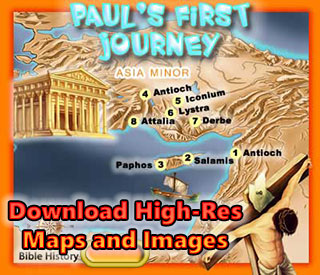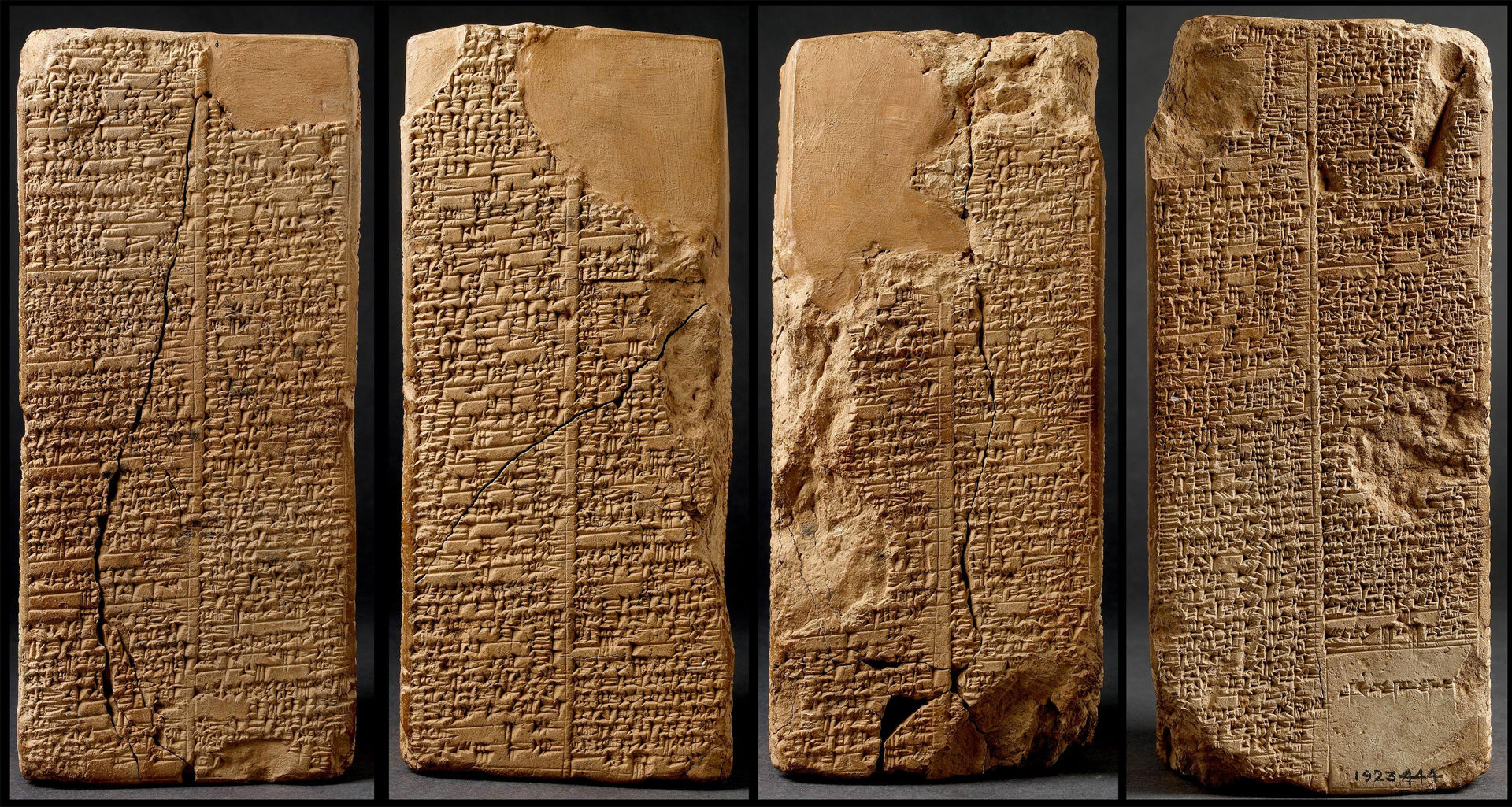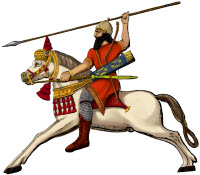|

|
|
|
|
Kids Bible Blog: Bible history
From the Bible to Modern Times: Understanding Israel and Palestine for Kids
Have you ever wondered how the stories in the Bible relate to the world today? Israel and Palestine are two lands that are central to many ancient stories in the Bible, but they are also very important today, with a rich and complicated history. Let's go on an adventure through time and explore how these two places have changed from ancient history all the way to modern times.
A Land of Stories: The Bible and the Ancient World
The Bible, especially the Old Testament, tells many stories about the people who lived in a land we call Israel and Palestine today. Thousands of years ago, this was a land filled with kings, prophets, and great events that shaped the beliefs of many people.
The Israelites were one of the first people mentioned in the Bible. They are the descendants of a man named Abraham, who, according to the Bible, was promised by God that his children would one day live in a special land. This promise is known as the Covenant.
One of the most famous stories is about the Exodus, where the Israelites, led by Moses, escaped slavery in Egypt. After wandering in the desert for many years, they finally entered the land...
Read More »
Tags: Israel Bible history Bible study Palestine Bible Ancient History Middle East Jerusalem King David Zionism Peace History for Kids Bible Stories Israeli-Palestinian Conflict Religious History
The Holy Land in the Bible: Israel and Palestine Through the Ages
The land of Israel and Palestine is often called the "Holy Land" because it is deeply connected to the religious traditions of Judaism, Christianity, and Islam. These lands have been home to many of the Bible’s most famous stories and figures, from Moses and David to Jesus and Muhammad. But beyond the Bible, the region has witnessed thousands of years of history, filled with empires, conflicts, and important cultural and religious events. In this article, we will take a journey through time to explore Israel and Palestine’s biblical past, its history through the ages, and how it remains significant today.
The Bible and the Beginning of the Holy Land
The story of Israel and Palestine in the Bible begins with a promise. In the Old Testament, God promises the land of Canaan to Abraham, the patriarch of the Israelites. According to the Bible, Abraham’s descendants, the Israelites, were destined to inherit this land.
Abraham is a key figure in the Bible, and his journey to the Holy Land marks the beginning of the Israelites' connection to the land of Canaan. His story is found in the book of Genesis, where God calls him to leave his home and travel to a new land,...
Read More »
Tags: Israel Ancient Israel history Ancient Israel Bible history Bible study Religious Sites Biblical History Christianity Palestine Bible Ancient History Middle East Jerusalem King David Bible Stories Israeli-Palestinian Conflict Israelites Judaism Islam Second Temple Middle East History Holy Land Modern History
How Did the Israelites Settle in the Promised Land?
The journey of the Israelites to the Promised Land is one of the most significant stories in the Bible. It is a tale of faith, perseverance, and divine promise. According to the Hebrew Bible, the Israelites’ journey was not a simple migration but a long, arduous process that spanned generations, involving struggles, challenges, and miraculous events. This article will explore how the Israelites came to settle in the land promised to them by God, and the role of faith, leadership, and divine intervention in their journey.
The Promise of the Land: Abraham and the Covenant
The story of the Israelites’ settlement in the Promised Land begins with Abraham, one of the most important patriarchs in the Bible. In the book of Genesis, God makes a covenant with Abraham, promising that his descendants will inherit the land of Canaan (modern-day Israel, Palestine, and parts of Jordan). This promise is often referred to as the Abrahamic Covenant.
God’s Command to Abraham: God tells Abraham to leave his home in Ur of the Chaldeans (in present-day Iraq) and journey to a land that God will show him. Abraham, though uncertain of where he was going, trusted in God’s plan and set off with his family. The...
Read More »
Tags: Moses Joshua Exodus Ancient Israel history Ancient Israel Old Testament Teaching Bible history Bible history King David Israelites Promised Land Canaan Abrahamic Covenant Twelve Tribes Biblical Journey
Faith and History: How Museums Bring the Bible to Life

The Bible, regarded as the holy scripture for millions of people across the globe, is not only a cornerstone of faith but also a pivotal historical document that provides insights into ancient civilizations, cultures, and traditions. For centuries, people have looked to the Bible for spiritual guidance, moral teachings, and a sense of connection to something greater than themselves. But the Bible is also much more—it’s a living testament to the history and legacy of human civilization, and it continues to influence art, literature, law, and society.
Museums, as guardians of our shared history, play an essential role in bringing the Bible to life. They not only preserve the physical artifacts that help tell the stories contained within the Bible but also provide a space for reflection, learning, and deeper understanding of how the Bible has shaped, and been shaped by, history. Through their collections, exhibits, and educational programs, museums offer an opportunity to explore the Bible in ways that transcend traditional religious teachings, making it a part of the broader historical and cultural narrative.
The Bible: A Bridge Between Faith and History
For many, the Bible is first and foremost a spiritual guide—a book of sacred texts that recounts the story of...
Read More »
Tags: Roman History Biblical archaeology Museum of Fine Arts Boston Bible artifacts Egyptian relics and the Bible Ancient Israel history Old Testament archaeology Teaching Bible history Bible history Bible study Cultural Heritage Museums Biblical History Ancient Manuscripts Religious Art Archaeology Faith and History Dead Sea Scrolls Christianity
The Sacred Power of Words in the Bible: A Historical Perspective

Throughout history, words had been appeared as powerful gear able to shaping civilizations, conveying divine messages, and influencing human destiny. In the biblical tradition, phrases are extra than mere expressions; they convey authority, divine will, and the strength to create or ruin. From the earliest scriptures to modern interpretations, the spoken and written phrase has performed a fundamental role in spiritual teachings, ancient occasions, and spiritual enlightenment.
The Divine Word in Ancient Scriptures
The importance of words in biblical history may be traced returned to the creation story in Genesis 1:3, where God spoke the universe into lifestyles:
“And God said, ‘Let there be light,’ and there was light.”
This verse establishes a foundational principle in Judeo-Christian notion: God’s phrase has creative electricity. Unlike human speech, which may be empty or fallacious, divine words bring forth reality. The Hebrew time period for "word," dabar, not most effective means a spoken announcement however additionally indicates movement, event, and cause.
In the New Testament, this idea is in addition bolstered in John 1:1:
“In the beginning was the Word, and the Word was with God, and the Word was God.”
Here, "the Word" (Greek: Logos) refers to Jesus Christ, highlighting that God’s divine expression have become flesh. This theological...
Read More »
Tags: Teaching Bible history Bible history Biblical words Power of words Prophetic speech Sacred texts Divine messages Christian faith Bible study Ancient scriptures
Exploring Biblical Archaeology at the Museum of Fine Arts, Boston

The Museum of Fine Arts in Boston is a treasure trove of ancient artifacts that can enrich our understanding of biblical history. Many of its exhibits provide valuable connections to events, cultures, and peoples mentioned in Scripture. Below are a few suggested artifacts you can explore with your students, along with their biblical references and significance.
1. Striding Lion from the Babylonian Processional Way
Description: The Striding Lion is a striking glazed brick relief from the Ishtar Gate in Babylon. This artifact exemplifies the grandeur of Nebuchadnezzar II’s Babylon.Biblical Reference: The city of Babylon is mentioned throughout the Bible as a symbol of power and rebellion against God. Daniel served in the court of Babylonian kings, including Nebuchadnezzar (Daniel 1-5). The lion imagery also resonates with Daniel’s experience in the lions’ den (Daniel 6).Teaching Point: Discuss Babylon's role in biblical prophecy and its influence during the exile of the Israelites.
2. Achaemenid Persian Artifacts
Description: The museum hosts various items from the Achaemenid Empire, which ruled during the time of Ezra and Nehemiah.Biblical Reference: King Cyrus of Persia issued the decree allowing the Jews to return to Jerusalem and rebuild the Temple (Ezra 1:1-4). Artifacts like Persian reliefs and coins illustrate the wealth and...
Read More »
Tags: Biblical archaeology Museum of Fine Arts Boston Bible artifacts Striding Lion Babylon Egyptian relics and the Bible Ancient Israel history Ancient Israel Old Testament archaeology Old Testament New Testament artifacts New Testament Teaching Bible history Bible history
Kid's Bible Maps
Bible History Online
The Geography of the Bible
© Bible History Online (https://bible-history.com)
Made by Network Local

Kids Bible Maps
About
Us
Contact Us
To
Parents
To
Teachers
Kids Bible Blog
Using Our Maps
Mission
Statement
Doctrinal
Statement
Instructions
Popular Bible Maps
The Journey of Abraham
Moses and the Exodus
Joshua and the Land
The Kingdom of David
The Kingdom of Solomon
Israel in Jesus' Time
Paul's First Journey
The Land of Israel
The Land of Egypt
The Land of Assyria
The Land of Babylon
The Land of Persia
The Land of Greece
The City of Rome
Noah's Ark and Mt. Ararat
The Tower of Babel
The Old Testament World
The New Testament World
Ancient Empires
Moses and the 10 Plagues
Ancient Peoples
The 10 Commandments
The 12 Tribes of Israel
The Ministry of Jesus
Bible Stories with Maps
Daniel in the Lions Den
David and Goliath
Baby Moses
Jesus and the Little Children
Coloring Book Images
Coloring Book
Donkey
Camel
Lamb
Noah's Ark
Noah's 3 Sons
Abraham
Sheep
Lion